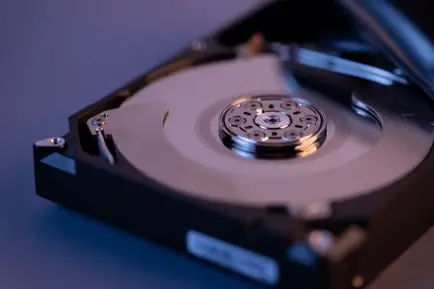How to Monitor the Capacity of Your NAS Drive?

Network-attached storage (NAS) is an incredibly useful technology for businesses and individuals alike. Whether you need to store large amounts of data or simply want to access files from multiple devices, a NAS drive can simplify your life. However, it’s important to monitor the capacity of your NAS drive to avoid running out of space or encountering performance issues. In this blog post, we’ll cover everything you need to know to keep tabs on your NAS storage.
Start with the Basics: Check Your NAS Storage Capacity
The first step to monitoring your NAS storage is to check the basic capacity of your system. This will give you an idea of how much space you have available and how much you’re currently using. To find this information, simply log into your NAS device and look for the “storage” or “capacity” options.
Most NAS drives come with built-in monitoring tools that will show you the total capacity of your device, as well as how much storage is used and free. Some systems may also show you a breakdown of storage usage by file type or user.
It’s important to check your NAS storage capacity regularly, especially if you’re using your device for business purposes. As your data grows, you may need to expand your storage capacity or upgrade your device altogether.
Scale Out NAS Storage for Added Flexibility
If you’re regularly working with large files or need to store massive amounts of data, you may want to consider using scale-out NAS storage. This technology allows you to add more storage devices to your NAS system as needed, without the need for downtime or data migration.
With scale-out NAS storage, you can easily expand your storage capacity as your needs change. You can also distribute your data across multiple devices for added redundancy and performance.
To set up scale-out NAS storage, you’ll need to ensure that your NAS device supports this technology. You may also need to purchase additional storage devices or upgrade your existing devices.
Set Up Alerts for Low Storage Conditions
One of the easiest ways to monitor your NAS storage capacity is to set up automatic alerts for low storage conditions. Many NAS systems have built-in email or push notification capabilities that can send alerts when your storage reaches a certain level.
To set up storage alerts, you’ll need to log into your NAS device and look for the notifications or alerts options. From there, you can configure the system to send you alerts when your storage capacity reaches a certain threshold.
Setting up alerts can help you proactively manage your NAS storage and avoid downtime or data loss due to lack of available space.
Monitor Performance and Resource Usage
In addition to checking your storage capacity, it’s also important to monitor the performance and resource usage of your NAS device. This can help you identify potential performance issues before they become critical.
Many NAS systems come with built-in performance monitoring tools that track things like processor usage, memory usage, and disk activity. You can use these tools to see how your system is performing under normal conditions and to identify potential bottlenecks or issues.
Additionally, many NAS devices have options for setting up performance thresholds or alerts. For example, you may be able to set up alerts for when your CPU usage reaches a certain level or when your disk activity is consistently high.
Regularly Review Your Storage Needs
Finally, it’s important to regularly review your storage needs to ensure that your NAS device is still meeting your requirements. As your data grows or your business evolves, you may need to reconsider your storage options or upgrade your device.
To review your storage needs, consider factors like:
- The types of files you’re storing
- How often you access your data
- How many users need to access the data
- Your business growth projections
By regularly reviewing your storage needs, you can ensure that you’re making the most of your NAS device and avoiding potential performance or capacity issues.
Conclusion
Monitoring the capacity of your NAS drive is an essential task for any business or individual using this technology. By regularly checking your storage capacity, using scale-out storage, setting up alerts, monitoring performance, and reviewing your storage needs, you can keep your NAS system running smoothly and avoid costly downtime or data loss.
